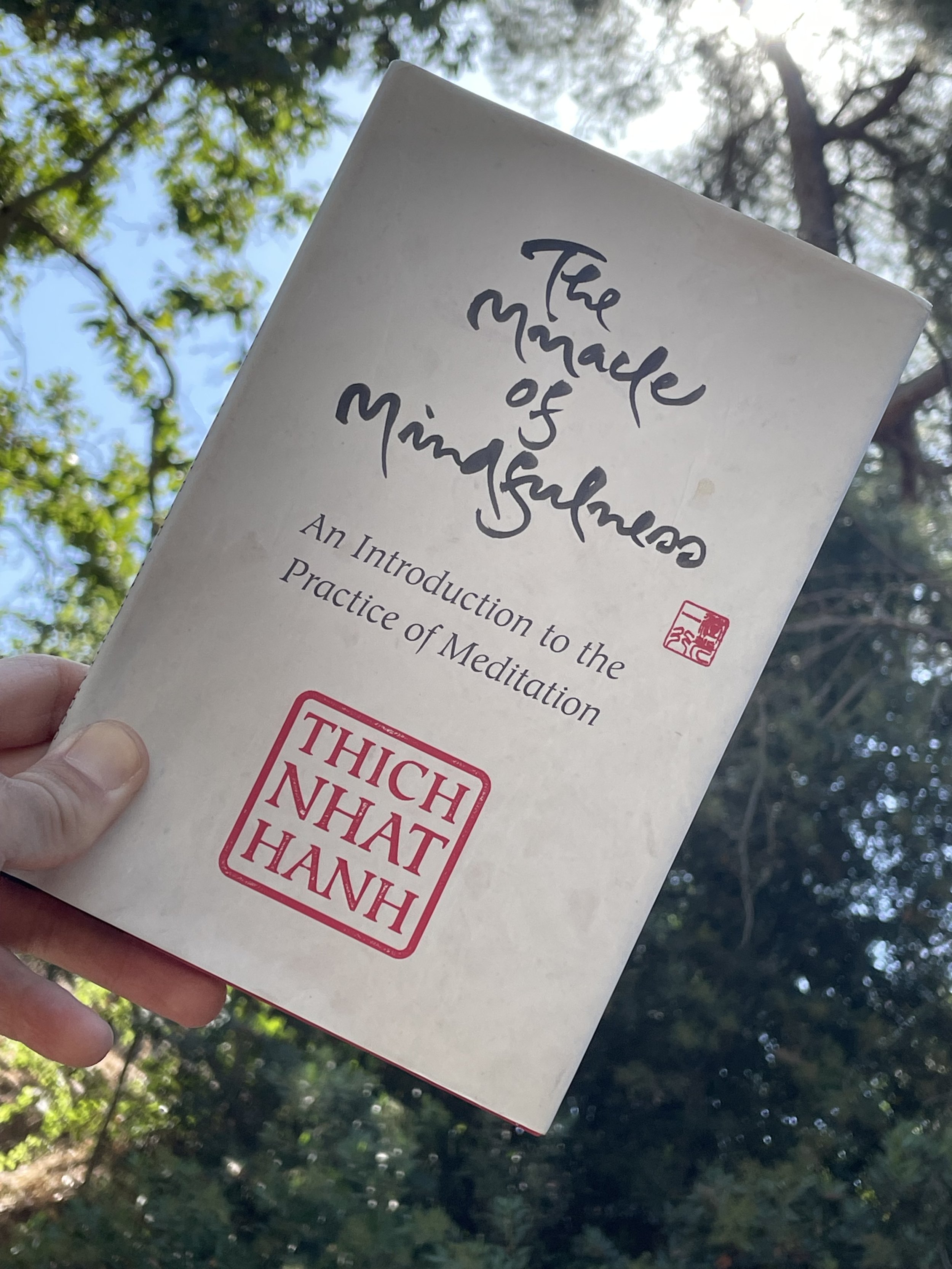"The Miracle of Mindfulness" by Thich Nhat Hanh

Anyone Martin Luther King Jr. looked up to is going to have my full attention, and Thich Nhat Hanh’s wisdom and the practices he preached and lived speak to well-earned inspiration for one of the best role models we have.
In reading Hanh’s The Miracle of Mindfulness, I came away with practical gifts atop the inspiration I felt as well, seeing the activism, bravery, and peace this man shared in his time by opposing the war in his homeland of Vietnam.
Starting with the foundation that is literally the baseline of living, breathing, I found real-world tools that have ample room for application on this side, from the critical discipline any athlete needs on one’s breathing, to the routine, even mundane moments that come from life’s myriad tests of patience and grace.
In Miracle, I was struck by the way Hanh invites us to look at our breathing as a central place for centering ourselves, as grounds rich with opportunity for growing mindfulness through controlling the cadence of how long and deeply we inhale, hold, and exhale each breath.
In putting attention on this essential aspect of every waking moment we have, we enable tremendous opportunities for awareness, to invite pausing and taking stock of everything around us.
This is especially the case in the people we come across and how we present who we are to them in our actions.
From this place, the possibilities for growth seem to be without end. Patience under duress can be fostered in well-balanced breathing, and a leverage point can be found and fixed on knee-jerk temptations to avoid unfortunate or unwholesome situations.
In this way, we can subvert the fears that come with these circumstances. Options open where only one seemed possible before, possibilities around sitting with the uninvited, ignoring nothing, acknowledging everything in its time in order to grow composure and strength even further.
And Miracle only gains value when Hanh speaks to losing focus in these moments as well.
This will happen, of course, and with the same clarity and warmth that marks all of Hanh’s prose, the reader is shown how benefits can be drawn at these points as well.
When our minds travel elsewhere, Hanh advises the same approach as to when negative and unhelpful thoughts and moments come our way: affirm their presence, take notice, and know that this moment or thought is part of us, as well as our world as a whole, just as much as any other.
Once there, Hanh encourages us, in due time, to gently return to focus, and move forward.
Taken in stride, these hurdles become rungs.
And, with our attention, these steps can work to lift the circle of awareness we can place around all of our actions.
Guideposts like these highlight the times when I could have done better to step back, breathe deeper, and held myself back a little longer.
When I give more of myself to the details and people around me, I’m improved as much as I’ve improved everything around me.
Humility and a student-first mindset nourishes these learnings, and I found these mindsets and so much more nurtured in Miracle.
To say I’d recommend a book to anyone is likely going to risk audiences who simply aren’t interested in a particular genre or field.
But I honestly can’t think of anyone who wouldn’t find benefits from the added calm, perspective, breath-work, and kindness that Hanh offers in Miracle, a new favorite among many for me.